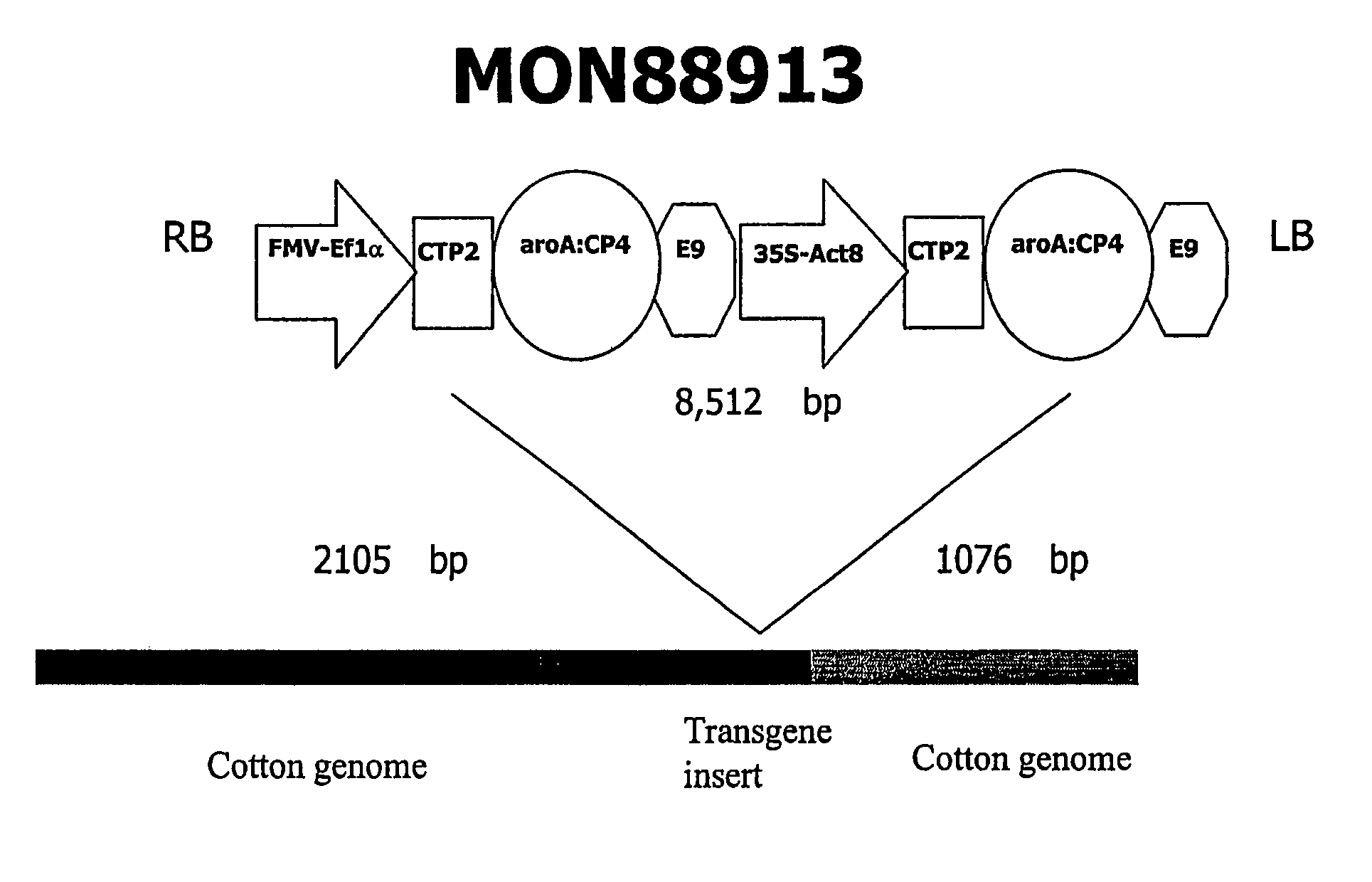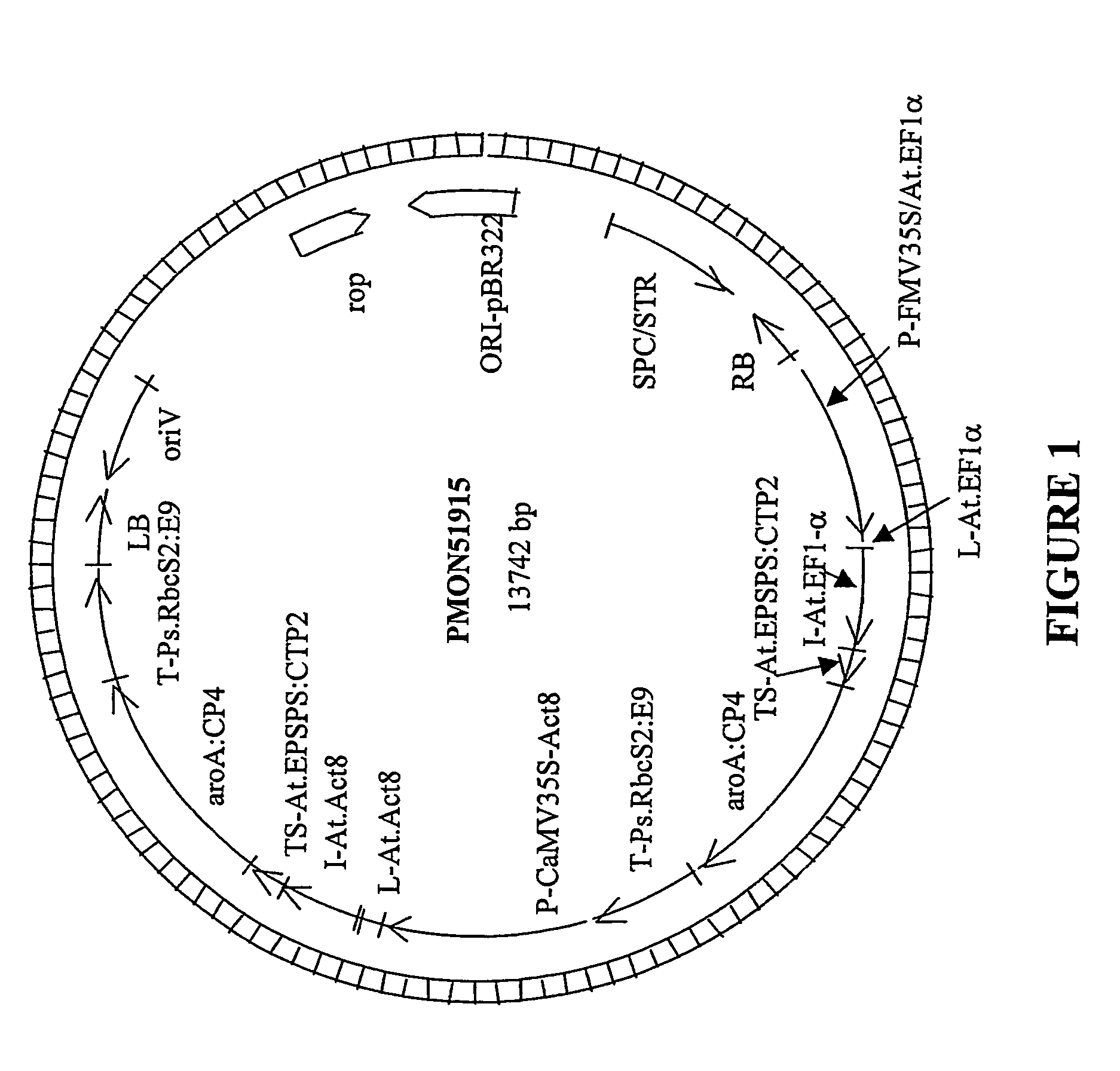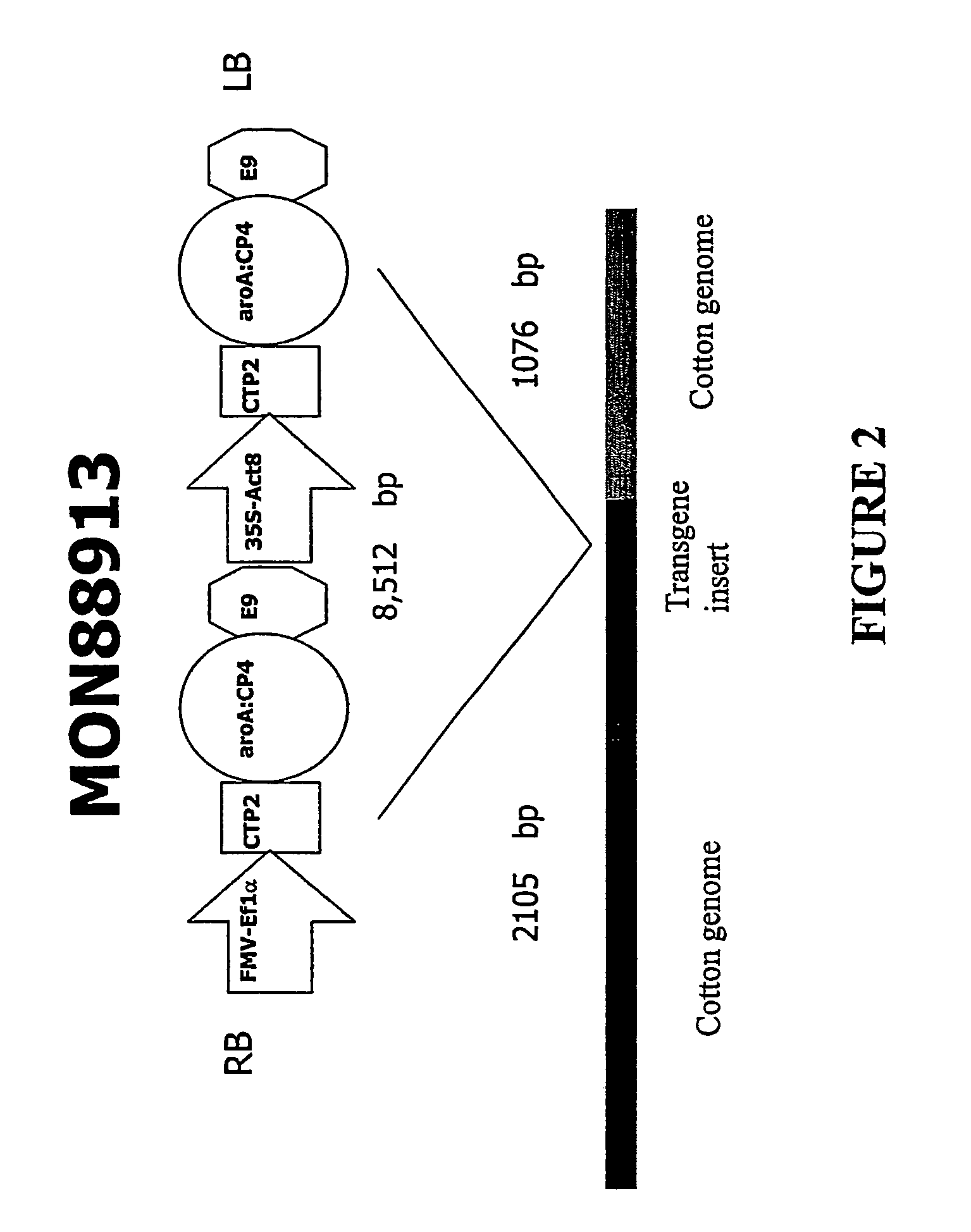Cotton event MON 88913 and compositions and methods for detection thereof
a technology of event mon 88913 and composition, applied in the field of plant molecular biology, can solve the problems of limited application of foliar cells beyond the four-leaf stage, and methods may not be useful for discriminating between different events
- Summary
- Abstract
- Description
- Claims
- Application Information
AI Technical Summary
Benefits of technology
Problems solved by technology
Method used
Image
Examples
example 1
[0050]The transgenic cotton event MON 88913 was generated by an Agrobacterium-mediated transformation of cotton cells with a DNA fragment derived from pMON51915 (FIG. 1). The plant transformation construct, pMON51915 was mated into Agrobacterium using a triparental mating procedure (Ditta et al., Proc. Natl. Acad. Sci. 77:7347-7351, 1980). Cotton cell transformation with transgenes can be performed using methods described, e.g., in U.S. Pat. No. 5,004,863, U.S. Pat. No. 5,159,135, and U.S. Pat. No. 5,518,908, herein incorporated by reference in their entirety. Cotton transformation is performed essentially as described in WO / 0036911 or as described in U.S. Pat. No. 5,846,797, herein incorporated by reference in its entirety. A modification of these methods can include, but is not limited to the following example. Coker 130 seed is surface sterilized and germinated in the dark. Hypocotyl explants are cut from the germinated seedlings to lengths of about 1-1.5 centimeter. Agrobacteriu...
example 2
[0053]The glyphosate tolerant cotton event MON 88913 was selected from many transgenic cotton events for tolerance to glyphosate vegetative and reproductive injury. The successful production of a commercial quality transgenic event currently requires producing a large number of transgenic events. In the present invention, MON 88913 was one event among approximately 1000 R0 events that had been transformed with many different DNA constructs that included pMON51915. The MON 88913 event was selected from the many events by a series of molecular analysis and glyphosate tolerance screens.
[0054]The events were screened in a greenhouse glyphosate tolerance test, the plants being scored for vegetative and reproductive tolerance. Fifteen to twenty-five R1 seeds from each event were planted in 15 cell trays with Metro-Mix 350 growing medium, which contains a combination of peat, vermiculite, nutrients, wetting agents, and processed bark and ash. Additional fertilizers included in the medium w...
example 3
[0059]Cotton genomic DNA for all PCR reactions and Southern blot analyses was isolated using a CTAB procedure (Rogers et al., Plant Mol. Biol. 5:69-76, 1985) or Dneasy™ 96 Plant Kit (Cat. # 69181, Qiagen Inc., Valencia, Calif.) following the manufacturers instructions. Leaf tissue was collected from plants at the 2-4-leaf stage. The smallest true leaves were collected from each plant and immediately frozen on dry ice. DNA was extracted using, e.g., the following method. The tissue was ground using plastic beads with liquid nitrogen. Five ml of extraction buffer was added to 0.75 gram (g) of tissue and incubated at 55° C. for 45 minutes. The CTAB extraction buffer consisted of 100 mM Tris pH8.0, 1.4M NaCl, 20 mM EDTA, 2% CTAB with the addition of 5 μl (microliter) of beta-mercaptoethanol, 5 μl of RNase and 1% PVPP. The samples were then extracted with an equal volume of chloroform (5 ml) and then centrifuged at 3700 RPM for 15 minutes at room temperature. The aqueous phase was transf...
PUM
| Property | Measurement | Unit |
|---|---|---|
| temperature | aaaaa | aaaaa |
| temperature | aaaaa | aaaaa |
| temperature | aaaaa | aaaaa |
Abstract
Description
Claims
Application Information
 Login to View More
Login to View More - R&D
- Intellectual Property
- Life Sciences
- Materials
- Tech Scout
- Unparalleled Data Quality
- Higher Quality Content
- 60% Fewer Hallucinations
Browse by: Latest US Patents, China's latest patents, Technical Efficacy Thesaurus, Application Domain, Technology Topic, Popular Technical Reports.
© 2025 PatSnap. All rights reserved.Legal|Privacy policy|Modern Slavery Act Transparency Statement|Sitemap|About US| Contact US: help@patsnap.com



